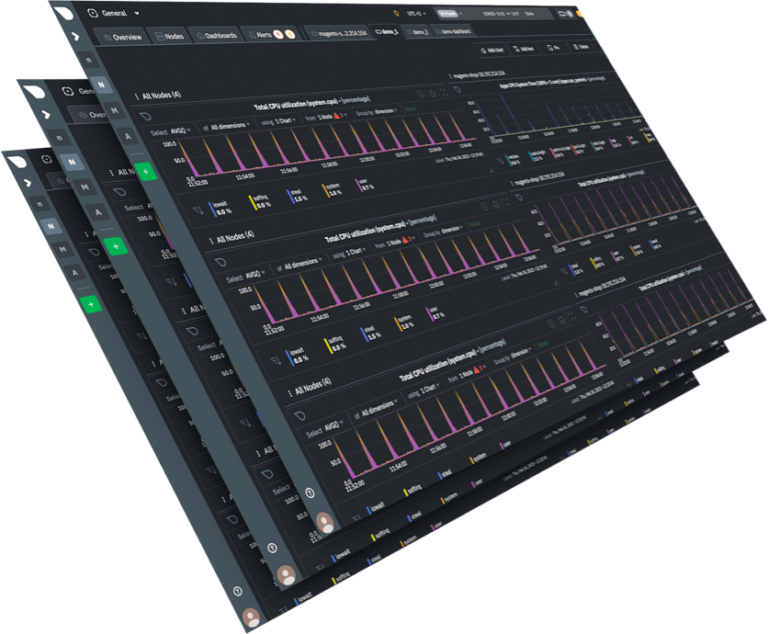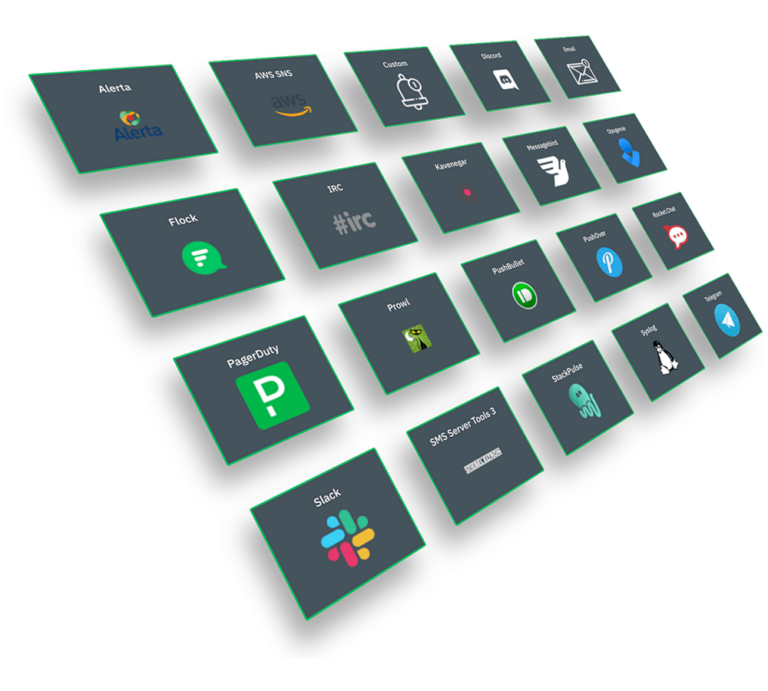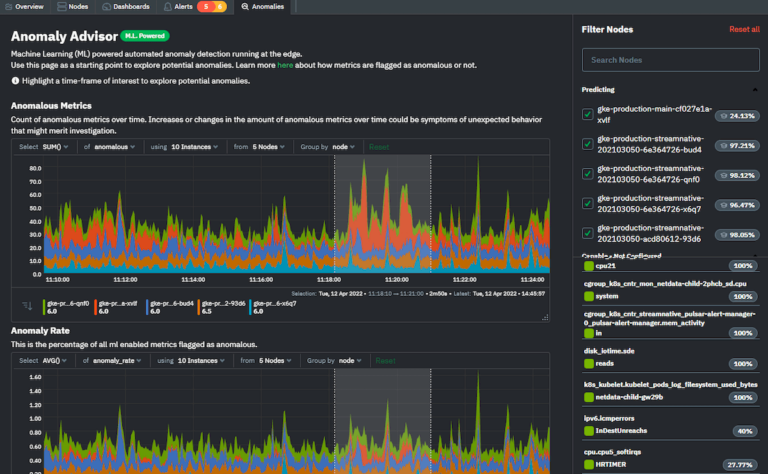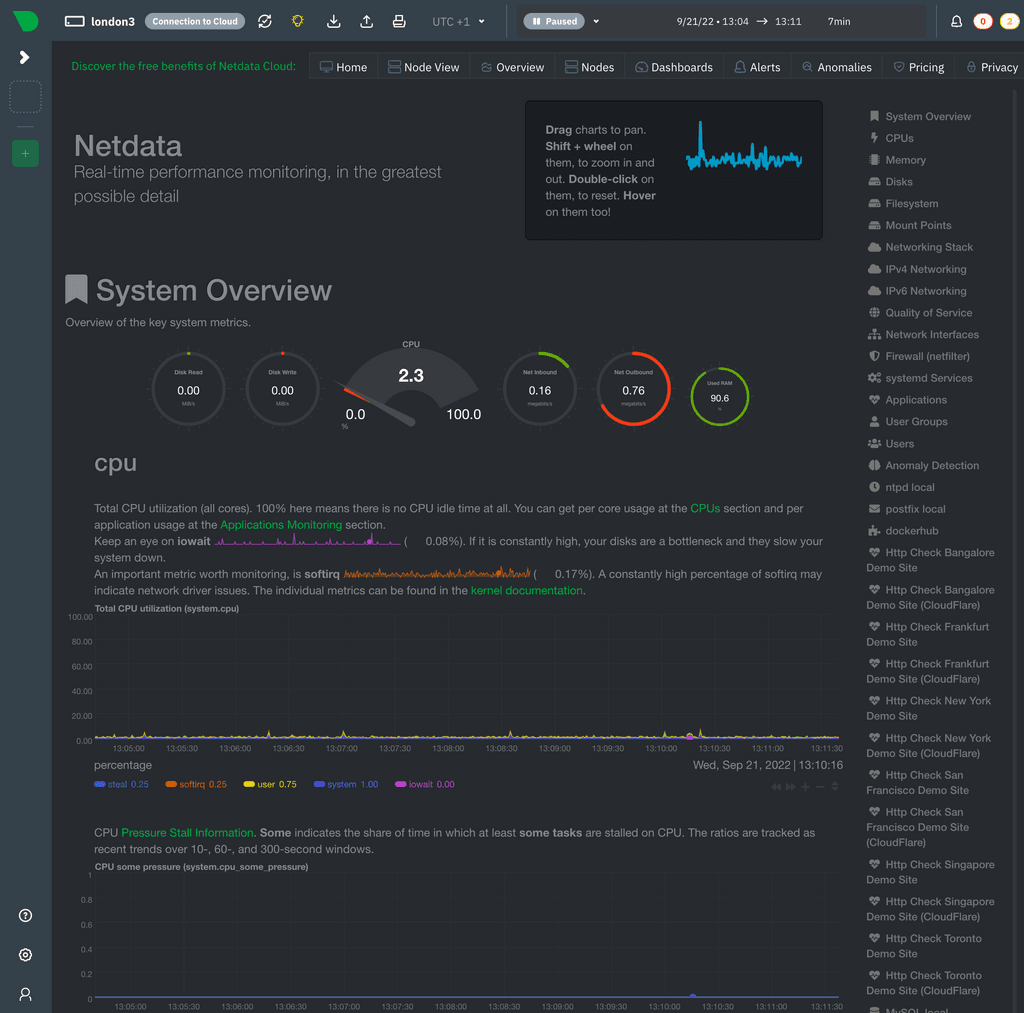netdata - real-time monitoring
-
@marcusquinn Yeah, that demo does look very good.
-
@imc67 @marcusquinn are you still using netdata? If so, are you using the selfhosted dashboard or the dashboard in the cloud ?
Also, in the demo that marcus linked, it says "Your Agents are open by default. Secure them easily with Netdata Enterprise Agent." at the top. What does this mean? I thought agents are reporting something and you cannot query agents. Why are they open by default and can they only be secured with enterprise version?
-
@imc67 @marcusquinn are you still using netdata? If so, are you using the selfhosted dashboard or the dashboard in the cloud ?
Also, in the demo that marcus linked, it says "Your Agents are open by default. Secure them easily with Netdata Enterprise Agent." at the top. What does this mean? I thought agents are reporting something and you cannot query agents. Why are they open by default and can they only be secured with enterprise version?
@girish I still use Netdata installed on all three Cloudron servers + 3 RPI's.
On Cloudron I access them via AppProxy so they are secured. Then all the Agents are currently connected to the Netdata Cloud and I can see them all in one dashboard.
I don't know what Enterprise Agent is?
As far as I know agents are streaming data to the local webGUI or to the Netdata Cloud GUI.
-
@cvachery we have to revisit this. We got blocked by the possibly confusing Login button appearing on the top right after logging in. I guess we have to live with it?
-
-
I would be delighted to see Netdata in Cloudron.
I have been using Netdata for many years now for about 50 servers.
My experience:
Netdata is a great tool for analysing the load on a machine, in real time or in the aftermath of a problem. Netdata itself is relatively resource-efficient.
Initially, I was irritated by the fact that the UI is very much geared towards using netdata.cloud. For example, there is a conspicuous "log in" button that takes you directly to the cloud (which has been payable for a few months now). Once you have registered the agent there, it is not so easy to get it out.
What is perhaps not so clear from the documentation is that the agent to be installed on the client can also act as a master and collect data from many clients. And completely without netdata.cloud.
As the Netdata UI is publicly accessible in the opensource version, protection via proxy is recommended, similar to https://learn.netdata.cloud/docs/netdata-agent/configuration/running-the-netdata-agent-behind-a-reverse-proxy/nginxHowever, the question for me is in what context Netdata should be integrated into Cloudron. As an agent in the apps? As an agent on the host system? As a "monitoring master" app to monitor other servers/containers?
-
There is no difference between the agent and master, the binaries are the same.
I don't see the point to differentiate usage between master and agent only as it is only some configuration changes.
By default the agent monitor the Cloudron server, and if you add the correct configuration it then become a parent node centralizing all your other nodes -
@cvachery there are a lot of issues in the app. Or maybe it's the package. I don't have enough working knowledge of netdata to understand where the fault lies.
Here's some issues:
-
The login button is there on top right even after login. We were willing to look past this. https://github.com/netdata/netdata/issues/9362 is the issue upstream, I think.
-
After you login, the app is continuously sending analytics data to some external service. There is no way to turn this off afaict.

- Creating a space fails because it is sending the request to Netdata Cloud again.

- To add a node, again it says go to cloud.

- To use functions, needs sign in and needs cloud.

So anyway, after all this, I bit the bullet and signed up at
https://app.netdata.cloud/because otherwise there is nothing much to do in the app. The app is the exact same in the cloud already.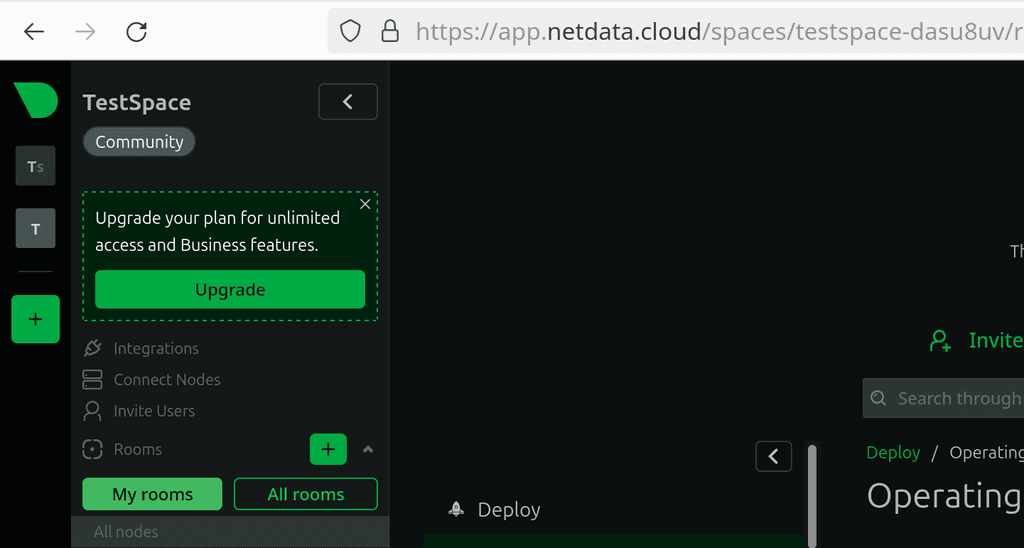
I think we have to take a step back to understand what is the advantage and purpose of selfhosting this. Nothing is stored in the database and the local directories atleast. It's all stored in the cloud.
For me, the cloud sign up is OK (it's not Cloudron.io's decision to decide upstream app workflows). But it seem everything is stored in the cloud service , defeating the purpose of selfhosting. The app is basically just hosting a front end to the cloud. It's like the youtube/twitter frontends. Except unlike the "alternate" frontends, the one in cloud and one selfhosted is the exact same. This could all be a big misunderstanding from me...
-
-
I would also first try to better understand if this is more like a self-hosted node to provide data to a dashboard, which is mostly designed to run on the netdata saas cloud, or if the self-hosted dashboard is more a thing of the past. A bit like with what unifi/ubiquity did, where the locally run dashboard is more and more just the legacy product.
-
OK, reading more now, it seems that this could be an agent (I guess this is what @simon was saying/asking in https://forum.cloudron.io/post/86581). The agent has a dashboard but of course much of it is not working because the dashboard is being coded for the cloud service. Since Cloudron apps are sandboxed and don't have access to other containers/apps/server stuff, it cannot monitor correctly. Ideally, it needs connection to docker and also the SYS_PTRACE and SYS_ADMIN caps (per https://www.netdata.cloud/integrations/deploy/docker-kubernetes/docker/)
-
For the telemetry stuff https://learn.netdata.cloud/docs/netdata-agent/configuration/anonymous-telemetry-events could be helpful.
There is also a discussion I could find where they talk about disabling the links to the netdata cloud: https://community.netdata.cloud/t/disable-cloud-nags/2985
-
Yes exactly, that's what I described above. Everything goes to the Netdata cloud! This is very confusing at first. However, as I said, you can still run Netdata as a master node and then carry out the analysis for many agents in one place. However, I still use the old UI for this, which can be called up with monitoringmaster-example.com/v1/. Here you then have a sidebar and can call up the individual nodes. As I want to monitor individual servers and not a connected server farm, this exactly covers my use case.
But back to the Cloudron use case.
As mentioned above, I see two possibilities:- the app is used to monitor the Cloudron server/hardware. That would already do a lot: Hard drive, ram etc. there is also a Docker plugin which provides various insights into the containers running on the machine.
- the use case described above: the app is a masternode and receives the metrics from child nodes (any web server). The advantage would be that you have the monitoring in one place and do not have to use the Netdata Cloud. Compared to a self-installation, another advantage would be that I could clarify the security (htpasswd?).

